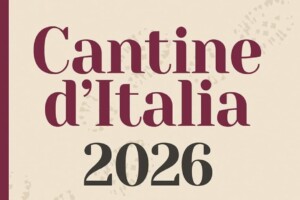The year 2020 will be remembered for a lot of things, almost all of them bad, however, it will also be remembered for the changes that the pandemic and the lockdown have brought to all of us in our daily lives. Habits and rhythms have changed, letting us re-discover the pleasure of the small things, like chatting with friends, reading a book, cooking with the family, and opening a bottle of wine together. The wine industry gives credit to the mass retail channel and e-commerce trading since it has been able to patch the hole of the crisis, into which bars, cafes and restaurants have, instead, sunk. The current situation is not simply going to change with the new calendar year, 2021. The “Wine Intelligence’s Industry Predictions for 2021,” said that 2021 will start exactly along the same lines as 2020, at least for the first half of the year. And, as long as the vaccination campaign does not guarantee significant global coverage. At that point in time, though, we will be able to go back to traveling and dining out, going to the café, and drinking with friends, just like we did before Covid19. And the good news for the wine world is that it is privileged in the on-premise channel. On the other hand, purchases in the off-premise channel will drop and consumption possibilities will start multiplying, fragmenting a market that we could paradoxically consider easier to manage, today, even though it is much poorer than it was in the past.
According to Wine Intelligence, 2021 will be a complex year. There will be difficult times economically, on many consumer markets, as countries will have to take stock of the damage public finances have endured, while in general, the economy will still be hurting, and countries will have to start collecting taxes to begin making up for the deficit. Further, since there will be less money in our pockets, and uncertainty about future prospects for employment and wealth, the desire to spend is unlikely to return any time soon. Wine, however, has become a central part of the lives of many consumers over the past twelve months. It is a new habit, for some people, while for others it will be a new legacy of the lockdown. In both cases, though, according to Wine Intelligence, the habit of drinking and enjoying a good glass of wine will continue, at least until our lives once again become busy enough and crowded with other interests. As we said, it will definitely be a complex year, but not entirely unpredictable, because catastrophic 2020 has nonetheless seen some of the 2019 forecasts come true, and this is a sign that certain consumption dynamics, regardless of everything, cannot be stopped. In 2021, we should expect the volumes of wine consumed to decline even more, but the amount spent per bottle will increase, though this may be largely due to rising alcohol taxes, starting with post-Brexit Britain. The year 2020 turned out to be an unexpectedly good year for some sectors of the wine category, and 2021 could see returning to traditional habits, because consumers are trying to spend their “alcohol budget” on more interesting things and in more rewarding ways. Governments around the world will actively seek ways to fill the frightening budget gaps left by the pandemic, and “Sin Taxes”, as they are defined in Britain, will be an easy target. The increase in prices will also be mitigated by the excess stocks of a number of producer countries that will be on the market in 2021.
A trend that is making a big comeback is alternative formats, which will break through the traditional market governed by glass bottles. The glass bottle is a record achievement, which is not really threatened in the wine world, at least for the moment. Yet, on the outskirts of its dominance, alternative packaging formats are flourishing to meet new needs, and there is a growing chorus of concern about the amount of carbon emitted to produce a glass bottle and ship it to market. Further, 2020 was an unexpectedly positive year for the bag-in-box format, as wholesale purchases lent themselves especially well to the spirit of the times and the need to conveniently store wine at home. Surprisingly, it was also a good year for canned wine, which, if 2020 had been a normal year, would have risked total oblivion, and instead it has provided three fundamental features in this strange year: portability, quantity control, and conservation. In 2021, the momentum of the bag-in-box and can markets will continue, and there will be a wave of new products on the market offering higher quality and more functional products.
An important aspect takes into account the relationships between consumers and wineries, which are stable and there will be more significant and lasting direct relationships with wine lovers, but wine tourism will take a long time to recover. One of the positive sides of the pandemic is that it has provided an opportunity and the motivation for wine producers and intermediaries to reach out and connect with their consumers. Some players already run e-commerce platforms, but many had never really invested in them. In 2020, direct sales channels from web sites or apps became the heroes. Will it be the same in 2021? Perhaps not, because retailers, wine shops, and local stores will return to work free of pandemic restrictions. However, the Covid19 era has provided a strong impetus for companies to invest in their direct relationships with consumers, and 2021 will offer the opportunity to consolidate these relationships. In the meantime, winery visits will be limited mostly to local tourists, and it will take quite a while, at least until the second half of the year for the classic out-of-town tourism to return, and the business it brings.
Finally, there is an interesting and economically marginal trend: the “wine seltzer” market will take off. Hard seltzer was virtually an unknown category 5 years ago. Today, it is perhaps the real novelty in the alcohol world. In the US, the domestic market has experienced triple-digit percentage growth over the past 2 years, and it is expected to triple again by 2023, according to the IWSR analysis. These are significant numbers, especially because, after all, we are simply talking about lightly flavored sparkling water. Just add some wine, as the big names in the sector like Gallo and Barefoot have already started to do, and there you have the “wine seltzer” market. And, in 2021, many companies will ride the wave. At least, anyway, according to Wine Intelligence forecasts, and provided that 2021 does not bring any other unpleasant surprises.
Copyright © 2000/2025
Contatti: info@winenews.it
Seguici anche su Twitter: @WineNewsIt
Seguici anche su Facebook: @winenewsit
Questo articolo è tratto dall'archivio di WineNews - Tutti i diritti riservati - Copyright © 2000/2025









































































































































































































